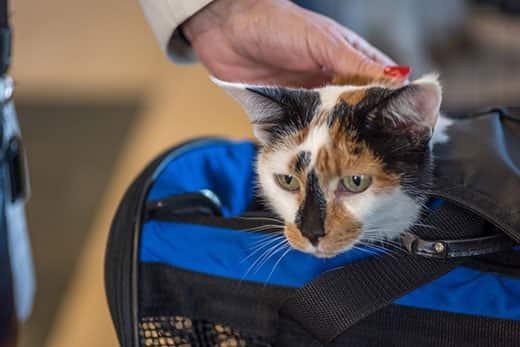
-
Find the right food for your petTake this quiz to see which food may be the best for your furry friend.Find the right food for your petTake this quiz to see which food may be the best for your furry friend.Featured products
 Small & Mini Mature Adult 7+ Dog Food
Small & Mini Mature Adult 7+ Dog FoodHill's Science Plan Small & Mini Breed Mature Adult Dog Food with Chicken is a complete pet food, specially formulated with ActivBiome+ Multi-Benefit Technology.
Tailored nutrition to support graceful ageing in small dogs. Specially made with a synergistic blend of nutrients for energy & vigor.Shop Now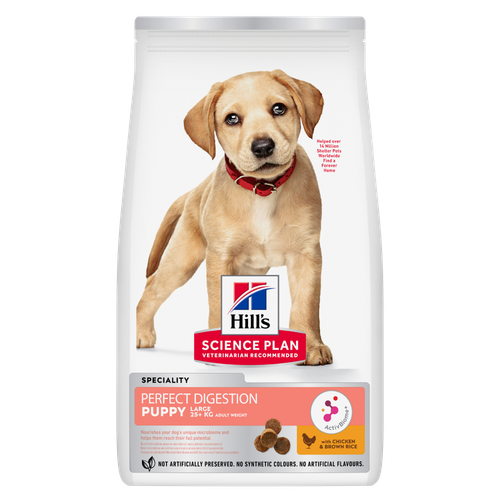 Perfect Digestion Large Breed Puppy Food
Perfect Digestion Large Breed Puppy FoodPrecisely balanced nutrition with Hill's ActivBiome+ prebiotic blend actively contributes to supporting digestive health and overall well-being to help your pet feel their best
Shop Now Perfect Digestion Small & Mini Adult Dog Food
Perfect Digestion Small & Mini Adult Dog FoodHill's Science Plan Perfect Digestion Small & Mini Breed Adult Dog Food with Chicken & Brown Rice supports ultimate digestive well-being & a healthy microbiome.
Shop NowFeatured products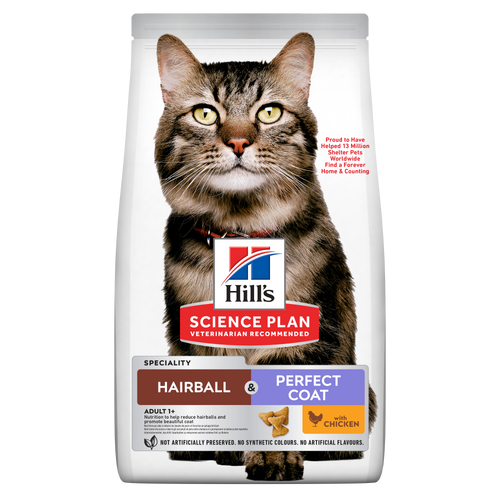 Hairball & Perfect Coat Adult Cat Food
Hairball & Perfect Coat Adult Cat FoodHill's Science Plan HAIRBALL & PERFECT COAT Adult cat food with Chicken is specially formulated to effectively help avoid hairball formation in adult cats while promoting a beautiful coat. Thanks to its mix of essential Omega-6 fatty acids, this food benefits the cat's skin and fur keeping them healthy and shiny. Our Advanced Fibre Technology helps reduce hairballs by naturally promoting their passage through the gut. This food is formulated with high-quality protein for a perfectly balanced, great-tasting recipe.
Shop Now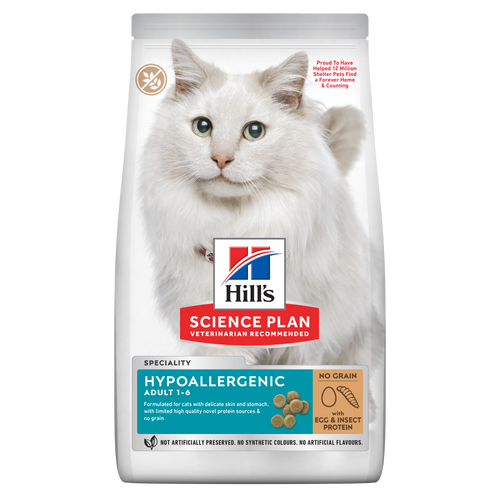 Hypoallergenic Dry Cat Food
Hypoallergenic Dry Cat FoodHILL'S SCIENCE PLAN Hypoallergenic Adult cat food with egg & insect protein is a complete pet food for adult cat 1–6 years old. It's formulated for cats with delicate skin and stomach, with limited high quality novel protein sources & no grain.
Shop Now Kitten Food
Kitten FoodTender chicken chunks in gravy for kittens, with omega-3s for healthy eye & brain development and high-quality protein to support muscle growth. With balanced minerals to promote strong bones & teeth.
Shop Now -
Dog
- Dog Tips & Articles
-
Health Category
- Weight
- Food & Environmental Sensitivities
- Urinary
- Digestive
- Joint
- Kidney
-
Life Stage
- Puppy Nutrition
- Adult Nutrition
- Senior Nutrition
Cat- Cat Tips & Articles
-
Health Category
- Weight
- Skin & Food Sensitivities
- Urinary
- Digestive
- Kidney
-
Life Stage
- Kitten Nutrition
- Adult Nutrition
Featured articles The Right Diet For Your Pet
The Right Diet For Your PetLearn what to look for in healthy pet food & nutrition, including ingredients, quality of the manufacturer, your pet's age, and any special needs they have
Read More Pet Food Storage Tips
Pet Food Storage TipsWhere you store your cat and dog food can make a big difference in the quality and freshness once it is opened. Here are some common questions and recommendations for optimal storage for all of Hill’s dry and canned cat and dog food.
Read More Understanding Your Pet's Microbiome
Understanding Your Pet's MicrobiomeLearn what a pet's microbiome is, how it contributes to your pet's gut & overall health, and why nutrition is important in maintaining healthy microbiomes.
Read More -


With so many options, finding the best cat carrier for your furry friend can feel overwhelming. Should it be soft-sided or hard-sided and top-loading or front-loading? And what's the best cat carrier for difficult cats?
This guide will help you make sense of the many cat carrier choices out there and choose the best one for your kitty.
Why Use a Cat Carrier?
A cat carrier should be at the top of any cat travel checklist. Even if you're just driving your kitty down the block or to the veterinarian, it's important for your cat's physical safety and emotional well-being to secure them in a carrier. And a DIY carrier — like a laundry basket, tote bag or pillowcase — won't work, emphasises CatHealth.com. Your cat "could easily get lost or get in your way while you're driving."
The best cat carrier will protect your cat from getting injured while in the car. Carriers also provide cats a comforting, secure space when they're feeling anxious about traveling.
What to Consider When Shopping for the Best Cat Carrier
Take the following aspects into account when comparing different cat carriers.
Cost
There are cat carriers for every budget. You don't need to spend big bucks, but you also don't want to spend too little and risk putting your cat in a carrier that's not well-made.
Size
The best cat carrier for your kitty will be just the right size for them. If a carrier is too big, your cat can slide around in it, and they may feel insecure and stressed. As Cat Behavior Associates explains, a more snug carrier will give your cat a feeling of security. Just make sure it's big enough for them to turn around and lie down in.
Closures
Don't forget to compare the closures of the carriers you're considering. The easiest carriers to use have two openings — one on top and one in front. Most hard plastic carriers unlatch in the middle so you can easily lift the carrier lid up and away from the bottom portion. These are great because you don't have to coax your cat out of the carrier, and they get to stay in their comfy spot.
Try to avoid carriers with zippers and Velcro closures, as cats can break these open if they're motivated enough. A carrier with a latched front gate is your best bet; even the most clever cat shouldn't be able to open it.
Maintenance
Since you'll have to clean the carrier regularly, ideally before and right after use, look for carriers that are simple to clean. Most carriers can be easily vacuumed or washed with warm water and mild dish soap. Some carriers also have removable padding that you can throw in the laundry with pet-safe laundry detergent.


Tasty Tips
Types of Cat Carriers
Here's a rundown of the most common cat carriers you'll find, along with their pros and cons.
Cardboard Carriers
Shelters give this type of carrier to new cat parents at the time of adoption. You shouldn't use this as a regular carrier because it's not constructed for long-term use. The cardboard fibers will eventually break down, your kitty will chew on it and the sides will become less rigid. You can keep it around the house as a fun hideout for your kitty, though.
Soft-Sided Carriers
Carriers with soft shells are made with sturdy yet flexible materials such as polyester, nylon and microfiber. A soft-sided carrier is less heavy than a hard carrier. It's also pliable, making it easier to maneuver safely into tight spaces, such as under an airplane seat. This can come in handy when you need to store the carrier when it's not in use. While soft carriers are durable, your cat can easily damage the material with their claws and teeth. Soft carriers also don't provide as much protection as a hard-sided carrier.
Hard-Sided Carriers
A perennial favourite for its ease of use, a hard cat carrier is more durable than other styles. The hard shell provides a sturdy space for your cat to chill while traveling. Hard carriers typically don't come with their own padding, but you can place a towel, small blanket or even a tiny pet bed inside to make your cat more comfortable. If you do insert padding, be sure your kitty still has enough room to move around comfortably. The biggest downside to hard-sided carriers is that they are bulkier and hard to stow away when they're not in use.
Rolling Carriers
The biggest perk of a rolling pet carrier is its maneuverability. It's a great option if you can't bear heavy loads. But, you have to remember to treat a rolling carrier with extra care. "Make sure to keep it level — carry it like a fragile present, not a piece of luggage," advises Pleasant Paws Veterinary Care. "A small amount of movement on the outside can seem like a carnival ride to a scared cat inside."
Cat Strollers and Backpacks
You can also transport your pet in a cat stroller or backpack. While these carriers can be fun, keep in mind that they can also be more stressful for cats than other carriers. A stroller doesn't provide the same amount of protection as a sturdier pet carrier, and a backpack can force your cat into an uncomfortable and awkward position.
If you're using a cat carrier, the possibility of needing to transport them in a car is probably very likely. In these cases, you might look for a cat carrier that is specially designed to clip into seat belts. This will help the carrier from sliding around in the car, stressing out your cat further, helping to prevent injury if you have to make a sudden stop.
The Best Cat Carrier for Difficult Cats
Getting your cat into their carrier can be an arduous process. And if your cat is irritable by nature, it can be even more of a challenge. Your secret weapon? A towel. If your kitty won't get into their carrier, gently wrap them in a towel and place them inside yourself. You also can line the carrier with a towel and place another one on top of the carrier to make it nice and cozy. And if they won't come out of the carrier? Use the same method, but be extremely careful reaching in.
The American Association of Feline Practitioners reports that the best carrier for a difficult cat is a hard-sided carrier. You can remove and replace the top with ease and the latched front gate will keep your fur baby securely locked in.
No matter which carrier you choose, don't forget to label the carrier with your name, contact information and a photo of your cat. This label is vital in the rare chance that you and your kitty get separated. Ultimately, go with the carrier that keeps your feline friend the safest and most comfortable while in transit.


Christine O'Brien is a writer, mom, and long-time cat parent whose two Russian Blues rule the house. Her work also appears in Care.com, What to Expect, and Fit Pregnancy, where she writes about pets, pregnancy, and family life. Find and follow her on Instagram and Twitter @brovelliobrien.
Related products

HILL'S SCIENCE PLAN Hypoallergenic Adult cat food with egg & insect protein is a complete pet food for adult cat 1–6 years old. It's formulated for cats with delicate skin and stomach, with limited high quality novel protein sources & no grain.

Hill's Science Plan HAIRBALL & PERFECT COAT Adult cat food with Chicken is specially formulated to effectively help avoid hairball formation in adult cats while promoting a beautiful coat. Thanks to its mix of essential Omega-6 fatty acids, this food benefits the cat's skin and fur keeping them healthy and shiny. Our Advanced Fibre Technology helps reduce hairballs by naturally promoting their passage through the gut. This food is formulated with high-quality protein for a perfectly balanced, great-tasting recipe.
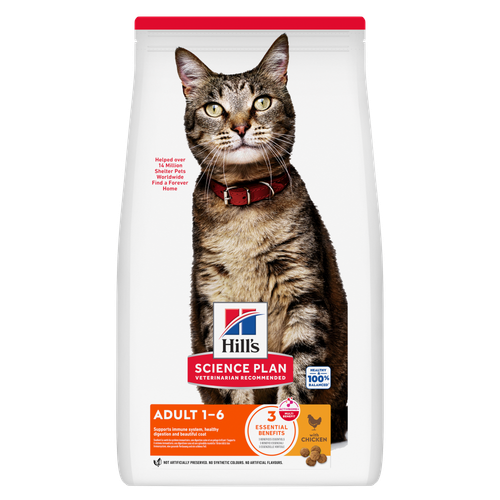
Hill's Science Plan Adult Cat Food with Chicken is a complete pet food, specially formulated with ActivBiome+ Multi-Benefit Technology.
This food is specially formulated to fuel the energy needs of cats during the prime of their life.

Tender chicken chunks in gravy for kittens, with omega-3s for healthy eye & brain development and high-quality protein to support muscle growth. With balanced minerals to promote strong bones & teeth.
Related articles
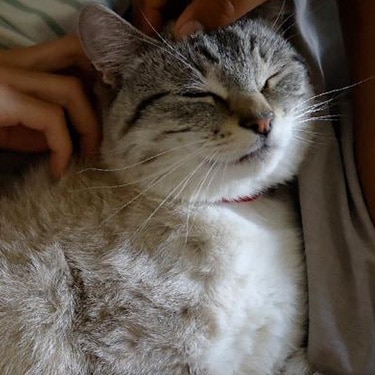
Find out about how you can support your cat's digestion to boost overall health. Diet is key to a long and happy life for your cat, so discover what you can do.
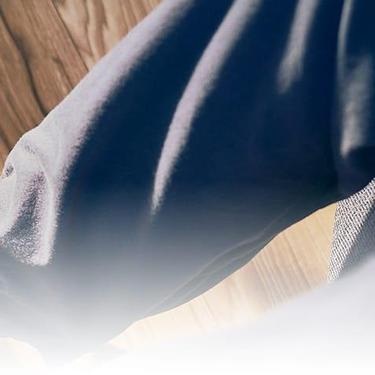
Discover which cat toys games your feline friend might like, and how they are great sources of exercise. Explore our library of articles to learn more.

Discover what you can do to spot and support a sensitive cat stomach. See what routines and food you can implement to help your cat be happy and healthy.

When learning how to train your cat, you'll start with very basic first steps that both reward good behavior and discourage the bad.

Put your cat on a diet without them knowing
Our low calorie formula helps you control your cat's weight. It's packed with high-quality protein for building lean muscles, and made with purposeful ingredients for a flavorful, nutritious meal. Clinically proven antioxidants, Vitamin C+E, help promote a healthy immune system.
Put your cat on a diet without them knowing
Our low calorie formula helps you control your cat's weight. It's packed with high-quality protein for building lean muscles, and made with purposeful ingredients for a flavorful, nutritious meal. Clinically proven antioxidants, Vitamin C+E, help promote a healthy immune system.


